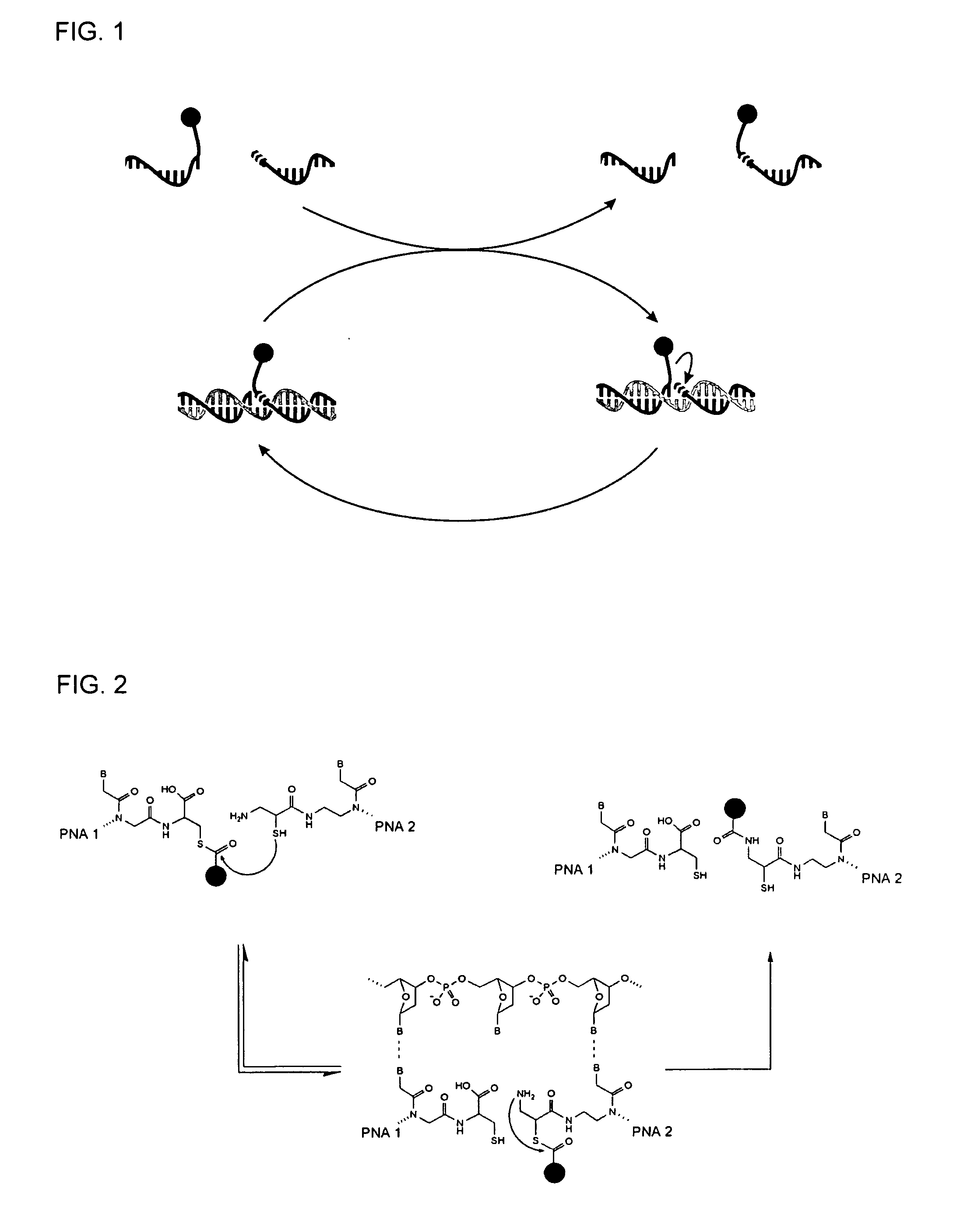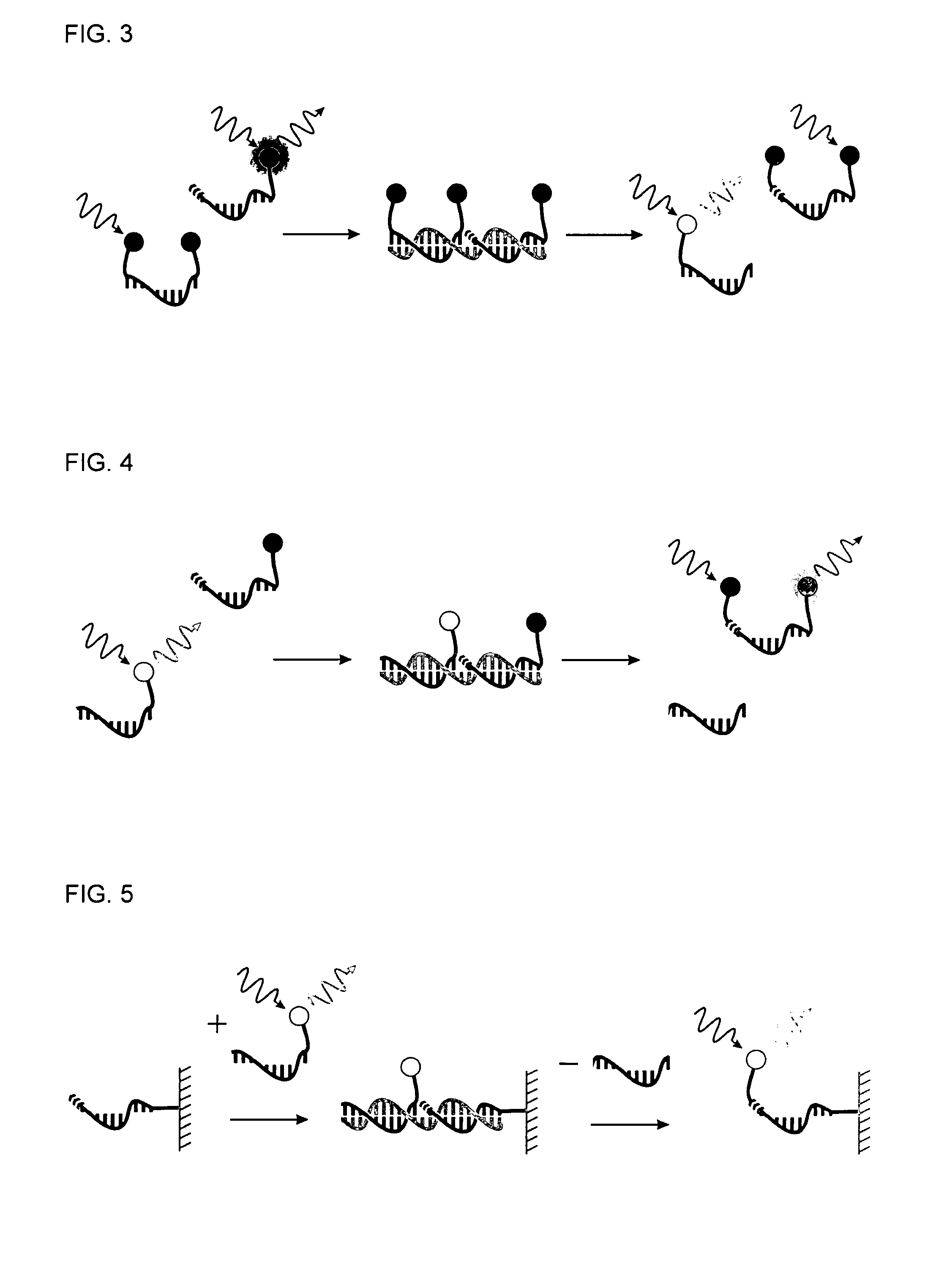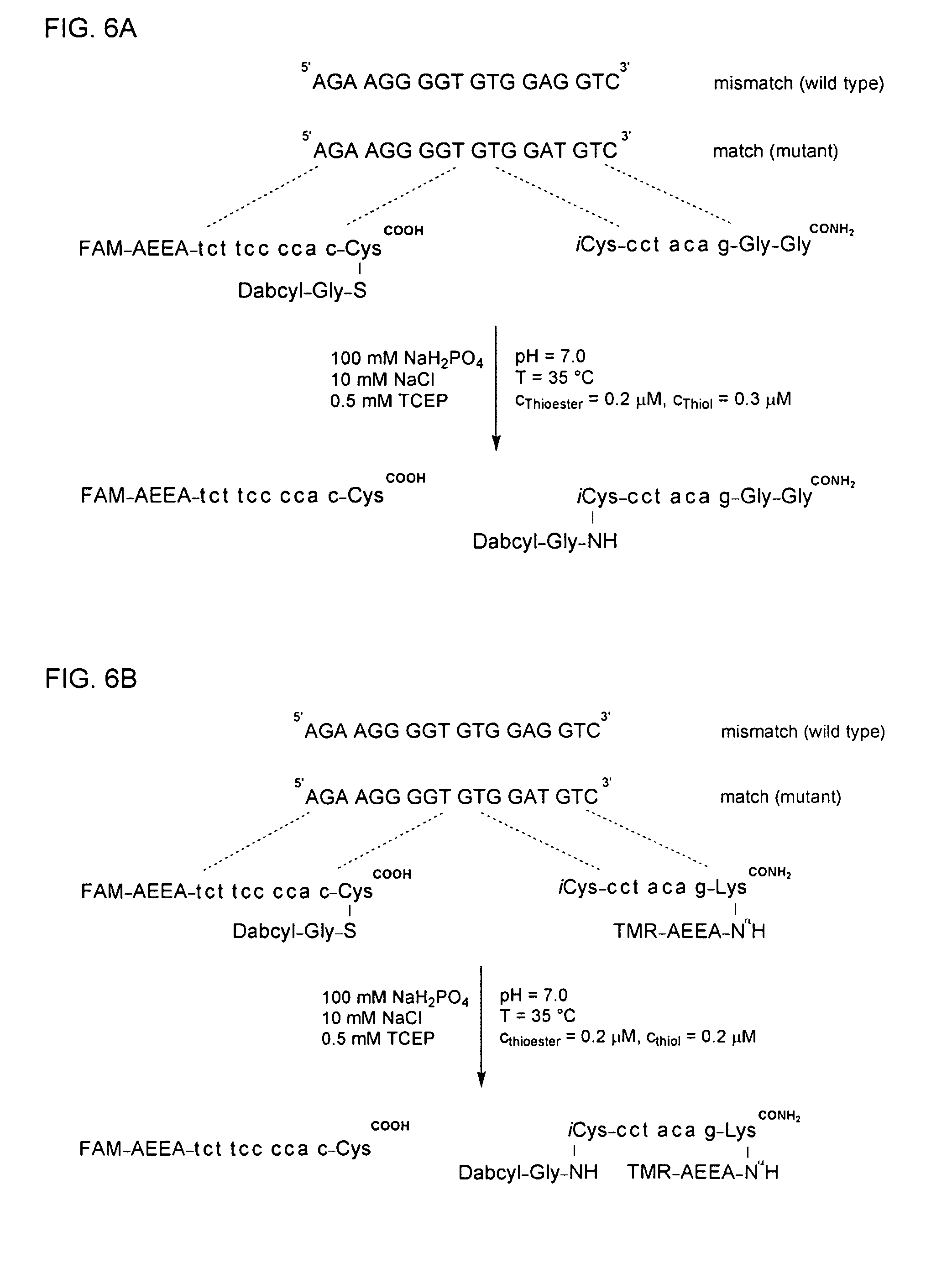Method for Detecting Target Nucleic Acids Using Template Catalyzed Transfer Reactions
- Summary
- Abstract
- Description
- Claims
- Application Information
AI Technical Summary
Benefits of technology
Problems solved by technology
Method used
Image
Examples
examples / experimental
EXAMPLES / EXPERIMENTAL SECTION
Example 1
General Remarks on Solid Phase Synthesis
[0264]The resins used in solid phase synthesis were loaded with the protected amino acids according to standard protocols (NovaBiochem Catalog, 2004 / 2005) (loading level about 0.15 mmol / g).
[0265]The resin was washed between coupling, capping, and deprotecting steps (1 mL each: 5×N,N-dimethylformamide (DMF), 5×CH2Cl2, 5×DMF). If the washing took place after treatment with trifluoroacetic acid (TFA), the first washing step was replaced by washing with 5×CH2Cl2. The same applied to the last washing step, if treatment of the resin with TFA followed.
[0266]For the purification, the combined TFA phases were concentrated in vacuo to a volume of about 0.1 mL. The crude product was precipitated by addition of Et2O (1 mL), spun down, and the supernatant was discarded. The pellet was resuspended in Et2O, spun down, and the supernatant was again discarded. The crude product was dissolved in 0.3 mL of an aqueous solutio...
example 2
Synthesis of FAM-AEEA-tct tcc cca c-Cys(S-Gly-Dabcyl)COOH
[0268]The PNA sequence Fmoc-tcBhocttcBhoccBhoccBhoccBhocaBhoccBhoc (Fmoc=fluorenyl−methyloxycarbonyl) was built via a synthesizer (Jarikote, J. V. et al. (2005) Eur. J. Org. Chem. 3187-3195) on a Fmoc-Cys(Mmt)-TGA resin (amount loaded: 2 μmol). The subsequent synthesis was continued with half of the resin.
[0269]After shaking the resin twice for 5 min in DMF / piperidine (4:1, 0.5 mL each time), the resin was reacted twice with 10 equivalents Fmoc-AEEA-OH (final concentration about 0.02 M in DMF), 10 equivalents of benzotriazole-1-yl-oxy-tris-pyrrolidino-phosphonium hexafluorophosphate (PyBOP), and 25 equivalents of N-methylmorpholine (NMM). Subsequently, the resin was first shaken in pyridine / Ac2O (10:1, 1 mL) for 5 min, and then twice in DMF / piperidine (4:1, 0.5 mL each time) for 5 min. The resin was reacted twice with 10 eq. 6-carboxyfluorescein (FAM-OH; final concentration about 0.02 M in DMF), 10 eq. PyBOP, and 20 eq. NMM e...
example 3
Synthesis of iCys-cct aca g-Gly-Gly-CONH2
[0272]The protecting group Fmoc of the Fmoc-Gly-MBHA resin (loading level: 2.5 μmol) was removed by treatment with DMF / piperidin (4:1, 1 mL). The PNA peptide sequence was subsequently built according to the Boc strategy, and the product was separated from the resin (Ficht et al. (2005) Chembiochem. 6, 2098-2103).
[0273]The OD260 of the product was 88.9 corresponding to a yield of 1.34 μmol or 54% relative to the loading level of the Fmoc-Gly-MBHA resin. The (m / z) quotient in the MALDI-TOF / MS analysis for the [M+H]+ form was calculated to be 2095.8, and a value of 2095.6 was detected. The retention time (tR) in HPLC was found to be 9.0 min when applying gradient I.
PUM
| Property | Measurement | Unit |
|---|---|---|
| Electrical conductance | aaaaa | aaaaa |
| Capacitance | aaaaa | aaaaa |
| Dynamic viscosity | aaaaa | aaaaa |
Abstract
Description
Claims
Application Information
 Login to View More
Login to View More - R&D
- Intellectual Property
- Life Sciences
- Materials
- Tech Scout
- Unparalleled Data Quality
- Higher Quality Content
- 60% Fewer Hallucinations
Browse by: Latest US Patents, China's latest patents, Technical Efficacy Thesaurus, Application Domain, Technology Topic, Popular Technical Reports.
© 2025 PatSnap. All rights reserved.Legal|Privacy policy|Modern Slavery Act Transparency Statement|Sitemap|About US| Contact US: help@patsnap.com



